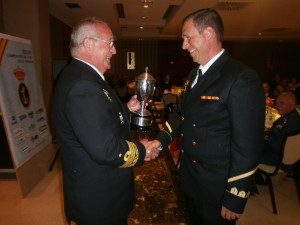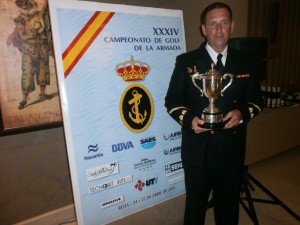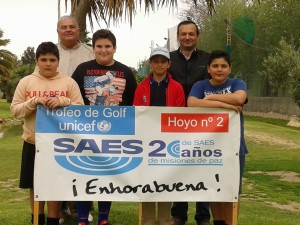The AJEMA, who chaired the closing ceremony, was among the 85 participants.
The XXXIV Golf Navy Championship, which took place at the Costa Ballena Golf Course (Rota, Cádiz) between 24 and 25 April 2015, had the participation of 85 golfers who came from different Spanish cities.
Participants were divided into three categories according to their handicaps, playing in the form of stableford handicap. The champion of the Navy was established by the best result «scratch» within the game mode programmed (stable ford scratch). D. Alejandro Salmeron Vaca, Corporal of Spanish Marine, won for the second consecutive year the first place in the final Scratch Classification.
The closing ceremony was chaired by the Hon. Mr. Admiral Chief of Naval Staff Jaime Muñoz-Delgado y Díaz del Rio, with the assistance of various civil and military authorities, and the representation of collaborating companies, as SAES, on whose behalf attended by President Alfredo Gordo.
SAES, which supports the championship since 2009, highlights the constant decisions involved in practicing golf, since it involves assessing options, calculate probabilities and possible outcomes, make a decision, run it and accept the consequences. A golf tournament is a good example of the values upheld by SAES, such as respect, honesty, perseverance, commitment, and teamwork.





